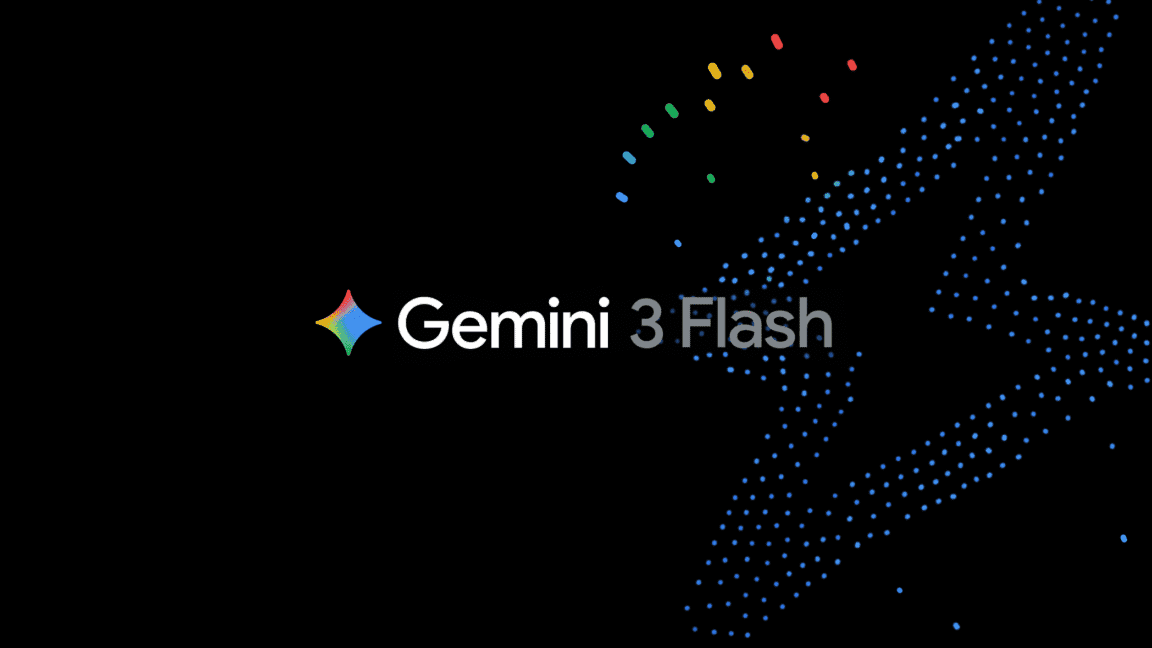SmartCADD: AI and Quantum Mechanics Accelerate Drug Discovery
4 Sources
4 Sources
[1]
AI and quantum mechanics team up to accelerate drug discovery
Drug discovery is much like working a jigsaw puzzle. The chemical compounds behind drug molecules must be shaped to fit with the proteins in our bodies to produce therapeutic effects. That requirement for a meticulous fit means the creation of new drugs is extremely complex and time-consuming. To speed up the puzzle-fitting process, researchers at SMU have created SmartCADD. This open-source virtual tool combines artificial intelligence, quantum mechanics and Computer Assisted Drug Design (CADD) techniques to speed up the screening of chemical compounds, significantly reducing drug discovery timelines. In a recent study published in the Journal of Chemical Information and Modeling, researchers demonstrated SmartCADD's ability to identify promising HIV drug candidates. This new tool grew from an interdisciplinary collaboration between SMU's department of chemistry in Dedman College of Humanities and Sciences and the computer science department in the Lyle School of Engineering. "There is an urgency to discover new classes of drugs like antibiotics, cancer treatments, antivirals and more," said Elfi Kraka, head of the Computational And Theoretical Chemistry Group (CATCO) at SMU. "Despite AI's rapid adoption in many fields, there has been a hesitancy for using it in scientific research, mainly because of its opaqueness and the quality of data used for training. SmartCADD addresses those concerns and can sift through billions of chemical compounds in one day, which significantly reduces the time needed to identify promising drug candidates." How SmartCADD Works SmartCADD combines deep learning models, filtering processes and explainable AI to screen databases of chemical compounds that are used to pinpoint drug leads. The tool has two main components: SmartCADD's Pipeline Interface, which collects data and runs filters, and its Filter Interface, which tells the system how each filter should work. These built-in filters assist with different stages of testing chemical compounds. They can help predict how a drug will behave in the body, model what drug structures will look like using 2D and 3D parameters and utilize an AI model that explains its decisions. Researchers demonstrated the SmartCADD platform through three different case studies of drugs used to treat HIV, finding that several proteins exist within the virus are believed to be promising targets. SmartCADD used data from the MoleculeNet library to create and search through a database of 800 million chemical compounds and determined that 10 million might work as HIV drugs. It then used filters to find compounds that best matched already approved HIV drugs. While the researchers focused on HIV targets for the study, they stressed that SmartCADD is versatile and can be applied to other drug discovery pipelines. "This is a user-friendly virtual screening platform that provides researchers with a highly integrated and flexible framework for building drug discovery pipelines," said Corey Clark, assistant professor of computer science in the Lyle School of Engineering and deputy director for Research at SMU Guildhall. "We are going to continue pushing the work forward to expand chemistry and machine learning capabilities even further. The project and its opportunities are truly exciting, and I know the next phase will be an even bigger step forward than the last." Collaboration Made SmartCADD Possible The paper also highlights the strength of interdisciplinary collaboration at SMU. In addition to Kraka and Clark, authors include chemistry postdoctoral research fellow Ayesh Madushanka, whose work is supported by a grant from the O'Donnell Data Science & Research Computing Institute, and computer science graduate student Eli Laird, an O'Donnell Institute Ph.D. fellowship recipient. "Fields like drug discovery require a combined effort to be truly successful," said Madushanka. "I'm certain if only the chemistry department had worked on this, the final product wouldn't have turned out the same. Interdisciplinary collaboration brings fresh perspectives on the same idea, helping to refine and improve it." Adds Laird, "Interdisciplinary research is absolutely necessary to make major research advancements that actually impact the real world. This is a major focus of SMU and a key reason I wanted to pursue my Ph.D. here. Impactful research can't happen in the vacuum of a single field. You have to look broadly across disciplines to spark ideas that will turn into true innovations. Breakthroughs often occur at the intersection of different fields, and that's where I aim to position my research." Funding for the study was provided by the National Science Foundation, grant CHE 2102461. Any opinions, findings, and conclusions or recommendations expressed in this material are those of the authors and do not necessarily reflect the views of the National Science Foundation.
[2]
AI and quantum mechanics team up to accelerate drug discovery
Drug discovery is much like working a jigsaw puzzle. The chemical compounds behind drug molecules must be shaped to fit with the proteins in our bodies to produce therapeutic effects. That requirement for a meticulous fit means the creation of new drugs is extremely complex and time-consuming. To speed up the puzzle-fitting process, researchers at SMU have created SmartCADD. This open-source virtual tool combines artificial intelligence, quantum mechanics and Computer Assisted Drug Design (CADD) techniques to speed up the screening of chemical compounds, significantly reducing drug discovery timelines. In a recent study published in the Journal of Chemical Information and Modeling, researchers demonstrated SmartCADD's ability to identify promising HIV drug candidates. This new tool grew from an interdisciplinary collaboration between SMU's department of chemistry in Dedman College of Humanities and Sciences and the computer science department in the Lyle School of Engineering. "There is an urgency to discover new classes of drugs like antibiotics, cancer treatments, antivirals and more," said Elfi Kraka, head of the Computational And Theoretical Chemistry Group (CATCO) at SMU. "Despite AI's rapid adoption in many fields, there has been a hesitancy for using it in scientific research, mainly because of its opaqueness and the quality of data used for training. SmartCADD addresses those concerns and can sift through billions of chemical compounds in one day, which significantly reduces the time needed to identify promising drug candidates." How SmartCADD works SmartCADD combines deep learning models, filtering processes and explainable AI to screen databases of chemical compounds that are used to pinpoint drug leads. The tool has two main components: SmartCADD's Pipeline Interface, which collects data and runs filters, and its Filter Interface, which tells the system how each filter should work. These built-in filters assist with different stages of testing chemical compounds. They can help predict how a drug will behave in the body, model what drug structures will look like using 2D and 3D parameters, and utilize an AI model that explains its decisions. Researchers demonstrated the SmartCADD platform through three different case studies of drugs used to treat HIV, finding that several proteins that exist within the virus are believed to be promising targets. SmartCADD used data from the MoleculeNet library to create and search through a database of 800 million chemical compounds and determined that 10 million might work as HIV drugs. It then used filters to find compounds that best matched already approved HIV drugs. While the researchers focused on HIV targets for the study, they stressed that SmartCADD is versatile and can be applied to other drug discovery pipelines. "This is a user-friendly virtual screening platform that provides researchers with a highly integrated and flexible framework for building drug discovery pipelines," said Corey Clark, assistant professor of computer science in the Lyle School of Engineering and deputy director for Research at SMU Guildhall. "We are going to continue pushing the work forward to expand chemistry and machine learning capabilities even further. The project and its opportunities are truly exciting, and I know the next phase will be an even bigger step forward than the last." Collaboration makes SmartCADD possible The paper also highlights the strength of interdisciplinary collaboration at SMU. In addition to Kraka and Clark, authors include chemistry postdoctoral research fellow Ayesh Madushanka and computer science graduate student Eli Laird. "Fields like drug discovery require a combined effort to be truly successful," said Madushanka. "I'm certain if only the chemistry department had worked on this, the final product wouldn't have turned out the same. Interdisciplinary collaboration brings fresh perspectives on the same idea, helping to refine and improve it." Laird adds, "Interdisciplinary research is absolutely necessary to make major research advancements that actually impact the real world. This is a major focus of SMU and a key reason I wanted to pursue my Ph.D. here. Impactful research can't happen in the vacuum of a single field. You have to look broadly across disciplines to spark ideas that will turn into true innovations. Breakthroughs often occur at the intersection of different fields, and that's where I aim to position my research."
[3]
AI and Quantum Mechanics Team Up to Accelerate Dru | Newswise
DALLAS (SMU) - Drug discovery is much like working a jigsaw puzzle. The chemical compounds behind drug molecules must be shaped to fit with the proteins in our bodies to produce therapeutic effects. That requirement for a meticulous fit means the creation of new drugs is extremely complex and time-consuming. To speed up the puzzle-fitting process, researchers at SMU have created SmartCADD. This open-source virtual tool combines artificial intelligence, quantum mechanics and Computer Assisted Drug Design (CADD) techniques to speed up the screening of chemical compounds, significantly reducing drug discovery timelines. In a recent study published in the Journal of Chemical Information and Modeling, researchers demonstrated SmartCADD's ability to identify promising HIV drug candidates. This new tool grew from an interdisciplinary collaboration between SMU's department of chemistry in Dedman College of Humanities and Sciences and the computer science department in the Lyle School of Engineering. "There is an urgency to discover new classes of drugs like antibiotics, cancer treatments, antivirals and more," said Elfi Kraka, head of the Computational And Theoretical Chemistry Group (CATCO) at SMU. "Despite AI's rapid adoption in many fields, there has been a hesitancy for using it in scientific research, mainly because of its opaqueness and the quality of data used for training. SmartCADD addresses those concerns and can sift through billions of chemical compounds in one day, which significantly reduces the time needed to identify promising drug candidates." How SmartCADD Works SmartCADD combines deep learning models, filtering processes and explainable AI to screen databases of chemical compounds that are used to pinpoint drug leads. The tool has two main components: SmartCADD's Pipeline Interface, which collects data and runs filters, and its Filter Interface, which tells the system how each filter should work. These built-in filters assist with different stages of testing chemical compounds. They can help predict how a drug will behave in the body, model what drug structures will look like using 2D and 3D parameters and utilize an AI model that explains its decisions. Researchers demonstrated the SmartCADD platform through three different case studies of drugs used to treat HIV, finding that several proteins exist within the virus are believed to be promising targets. SmartCADD used data from the MoleculeNet library to create and search through a database of 800 million chemical compounds and determined that 10 million might work as HIV drugs. It then used filters to find compounds that best matched already approved HIV drugs. While the researchers focused on HIV targets for the study, they stressed that SmartCADD is versatile and can be applied to other drug discovery pipelines. "This is a user-friendly virtual screening platform that provides researchers with a highly integrated and flexible framework for building drug discovery pipelines," said Corey Clark, assistant professor of computer science in the Lyle School of Engineering and deputy director for Research at SMU Guildhall. "We are going to continue pushing the work forward to expand chemistry and machine learning capabilities even further. The project and its opportunities are truly exciting, and I know the next phase will be an even bigger step forward than the last." Collaboration Made SmartCADD Possible The paper also highlights the strength of interdisciplinary collaboration at SMU. In addition to Kraka and Clark, authors include chemistry postdoctoral research fellow Ayesh Madushanka, whose work is supported by a grant from the O'Donnell Data Science & Research Computing Institute, and computer science graduate student Eli Laird, an O'Donnell Institute Ph.D. fellowship recipient. "Fields like drug discovery require a combined effort to be truly successful," said Madushanka. "I'm certain if only the chemistry department had worked on this, the final product wouldn't have turned out the same. Interdisciplinary collaboration brings fresh perspectives on the same idea, helping to refine and improve it." Adds Laird, "Interdisciplinary research is absolutely necessary to make major research advancements that actually impact the real world. This is a major focus of SMU and a key reason I wanted to pursue my Ph.D. here. Impactful research can't happen in the vacuum of a single field. You have to look broadly across disciplines to spark ideas that will turn into true innovations. Breakthroughs often occur at the intersection of different fields, and that's where I aim to position my research." Funding for the study was provided by the National Science Foundation, grant CHE 2102461. Any opinions, findings, and conclusions or recommendations expressed in this material are those of the authors and do not necessarily reflect the views of the National Science Foundation. About SMU SMU is the nationally ranked global research university in the dynamic city of Dallas. SMU's alumni, faculty and more than 12,000 students in eight degree-granting schools demonstrate an entrepreneurial spirit as they lead change in their professions, communities and the world.
[4]
Revolutionizing drug discovery with SmartCADD
Southern Methodist UniversityOct 8 2024 Drug discovery is much like working a jigsaw puzzle. The chemical compounds behind drug molecules must be shaped to fit with the proteins in our bodies to produce therapeutic effects. That requirement for a meticulous fit means the creation of new drugs is extremely complex and time-consuming. To speed up the puzzle-fitting process, researchers at SMU have created SmartCADD. This open-source virtual tool combines artificial intelligence, quantum mechanics and Computer Assisted Drug Design (CADD) techniques to speed up the screening of chemical compounds, significantly reducing drug discovery timelines. In a recent study published in the Journal of Chemical Information and Modeling, researchers demonstrated SmartCADD's ability to identify promising HIV drug candidates. This new tool grew from an interdisciplinary collaboration between SMU's department of chemistry in Dedman College of Humanities and Sciences and the computer science department in the Lyle School of Engineering. There is an urgency to discover new classes of drugs like antibiotics, cancer treatments, antivirals and more. Despite AI's rapid adoption in many fields, there has been a hesitancy for using it in scientific research, mainly because of its opaqueness and the quality of data used for training. SmartCADD addresses those concerns and can sift through billions of chemical compounds in one day, which significantly reduces the time needed to identify promising drug candidates." Elfi Kraka, Head of the Computational And Theoretical Chemistry Group (CATCO) at SMU How SmartCADD works SmartCADD combines deep learning models, filtering processes and explainable AI to screen databases of chemical compounds that are used to pinpoint drug leads. The tool has two main components: SmartCADD's Pipeline Interface, which collects data and runs filters, and its Filter Interface, which tells the system how each filter should work. These built-in filters assist with different stages of testing chemical compounds. They can help predict how a drug will behave in the body, model what drug structures will look like using 2D and 3D parameters and utilize an AI model that explains its decisions. Researchers demonstrated the SmartCADD platform through three different case studies of drugs used to treat HIV, finding that several proteins exist within the virus are believed to be promising targets. SmartCADD used data from the MoleculeNet library to create and search through a database of 800 million chemical compounds and determined that 10 million might work as HIV drugs. It then used filters to find compounds that best matched already approved HIV drugs. While the researchers focused on HIV targets for the study, they stressed that SmartCADD is versatile and can be applied to other drug discovery pipelines. "This is a user-friendly virtual screening platform that provides researchers with a highly integrated and flexible framework for building drug discovery pipelines," said Corey Clark, assistant professor of computer science in the Lyle School of Engineering and deputy director for Research at SMU Guildhall. "We are going to continue pushing the work forward to expand chemistry and machine learning capabilities even further. The project and its opportunities are truly exciting, and I know the next phase will be an even bigger step forward than the last." Collaboration made SmartCADD possible The paper also highlights the strength of interdisciplinary collaboration at SMU. In addition to Kraka and Clark, authors include chemistry postdoctoral research fellow Ayesh Madushanka, whose work is supported by a grant from the O'Donnell Data Science & Research Computing Institute, and computer science graduate student Eli Laird, an O'Donnell Institute Ph.D. fellowship recipient. "Fields like drug discovery require a combined effort to be truly successful," said Madushanka. "I'm certain if only the chemistry department had worked on this, the final product wouldn't have turned out the same. Interdisciplinary collaboration brings fresh perspectives on the same idea, helping to refine and improve it." Adds Laird, "Interdisciplinary research is absolutely necessary to make major research advancements that actually impact the real world. This is a major focus of SMU and a key reason I wanted to pursue my Ph.D. here. Impactful research can't happen in the vacuum of a single field. You have to look broadly across disciplines to spark ideas that will turn into true innovations. Breakthroughs often occur at the intersection of different fields, and that's where I aim to position my research." Funding for the study was provided by the National Science Foundation, grant CHE 2102461. Any opinions, findings, and conclusions or recommendations expressed in this material are those of the authors and do not necessarily reflect the views of the National Science Foundation. Southern Methodist University Journal reference: Madushanka,A., et al. (2024). SmartCADD: AI-QM Empowered Drug Discovery Platform with Explainability. Journal of Chemical Information and Modeling. doi.org/10.1021/acs.jcim.4c00720
Share
Share
Copy Link
Researchers at SMU have developed SmartCADD, an open-source tool that combines AI, quantum mechanics, and computer-assisted drug design to significantly speed up the drug discovery process.

Revolutionizing Drug Discovery with AI and Quantum Mechanics
Researchers at Southern Methodist University (SMU) have developed a groundbreaking tool called SmartCADD that promises to accelerate the drug discovery process significantly. This open-source virtual platform combines artificial intelligence (AI), quantum mechanics, and Computer Assisted Drug Design (CADD) techniques to streamline the screening of chemical compounds
1
.The Challenge of Drug Discovery
Drug discovery is often likened to solving a complex jigsaw puzzle. The process involves finding chemical compounds that can precisely fit with proteins in the human body to produce therapeutic effects. This meticulous matching process has traditionally been extremely time-consuming and complex
2
.SmartCADD: A Game-Changing Solution
SmartCADD addresses these challenges by leveraging advanced technologies:
- Deep learning models
- Filtering processes
- Explainable AI
The tool consists of two main components:
- Pipeline Interface: Collects data and runs filters
- Filter Interface: Defines how each filter should operate
These components work together to predict drug behavior, model drug structures using 2D and 3D parameters, and provide explanations for AI decisions
3
.Impressive Capabilities
In a recent study published in the Journal of Chemical Information and Modeling, SmartCADD demonstrated its ability to:
- Create and search through a database of 800 million chemical compounds
- Identify 10 million potential HIV drug candidates
- Use filters to match compounds with approved HIV drugs
Notably, SmartCADD can process billions of chemical compounds in just one day, dramatically reducing the time needed to identify promising drug candidates
4
.Related Stories
Interdisciplinary Collaboration
SmartCADD is the result of a collaboration between SMU's chemistry department and computer science department. This interdisciplinary approach brought together experts from different fields, leading to innovative solutions and fresh perspectives.
Dr. Elfi Kraka, head of the Computational And Theoretical Chemistry Group (CATCO) at SMU, emphasized the tool's ability to address concerns about AI's opaqueness and data quality in scientific research
1
.Future Implications
While the initial focus was on HIV drug candidates, the researchers stress that SmartCADD is versatile and can be applied to various drug discovery pipelines. This flexibility could potentially accelerate the development of new antibiotics, cancer treatments, and antivirals.
Dr. Corey Clark, assistant professor of computer science at SMU, expressed excitement about the project's future, hinting at further expansions in chemistry and machine learning capabilities
2
.As interdisciplinary research continues to drive innovation in drug discovery, tools like SmartCADD represent a significant step forward in addressing urgent medical needs and potentially revolutionizing the pharmaceutical industry.
References
Summarized by
Navi
[1]
[4]
Related Stories
AI Breakthrough: PepMLM Targets 'Undruggable' Proteins, Opening New Avenues for Disease Treatment
13 Aug 2025•Science and Research

Mount Sinai Launches AI-Powered Center for Small Molecule Drug Discovery
03 Apr 2025•Science and Research

AI Revolutionizes Drug Discovery: KAIST's BInD Model Designs Optimal Cancer-Fighting Molecules
12 Aug 2025•Science and Research

Recent Highlights
1
Google launches Gemini 3 Flash as default AI model, delivering speed with Pro-grade reasoning
Technology

2
OpenAI launches GPT Image 1.5 as AI image generator war with Google intensifies
Technology

3
OpenAI launches ChatGPT app store, opening doors for third-party developers to build AI-powered apps
Technology





